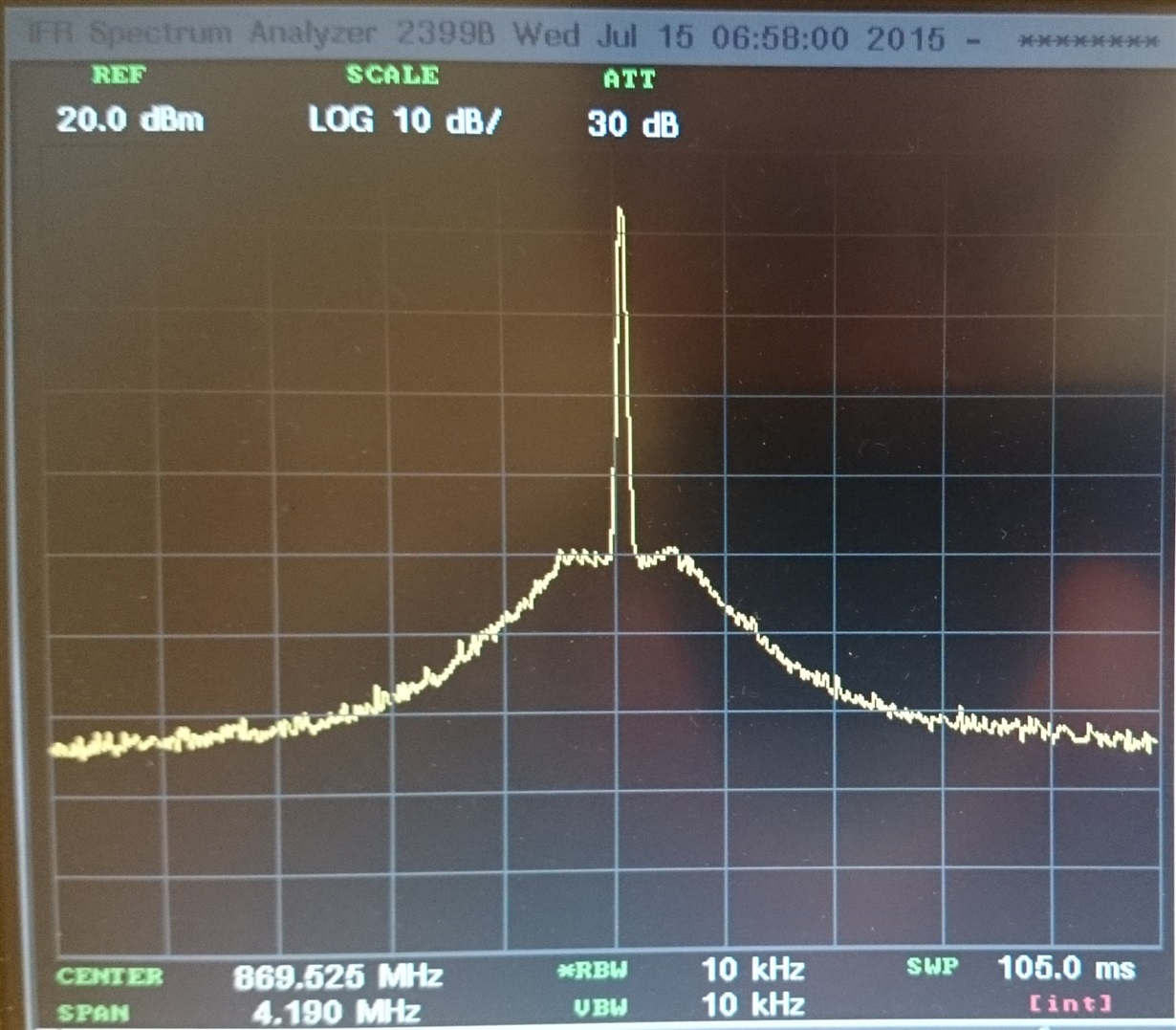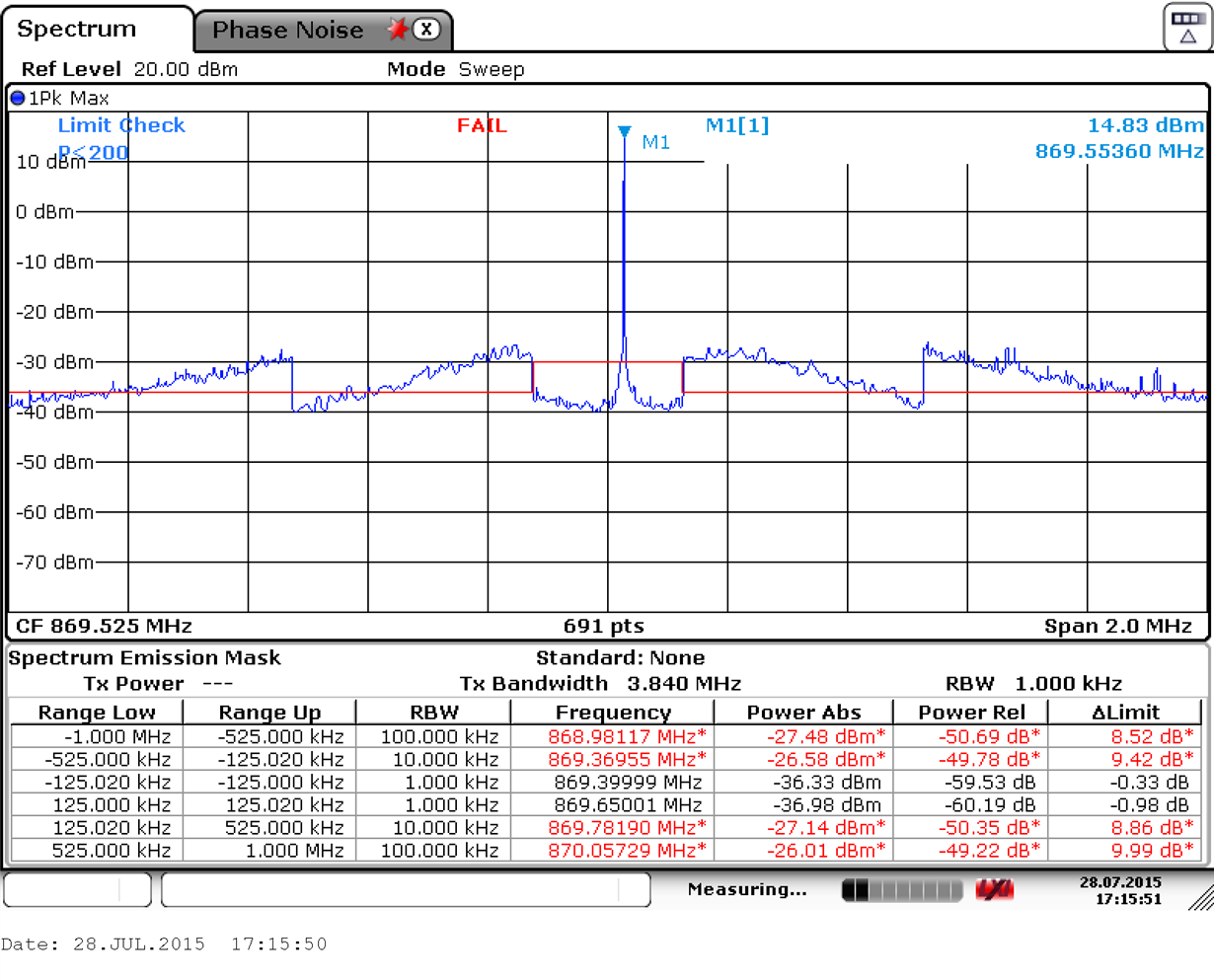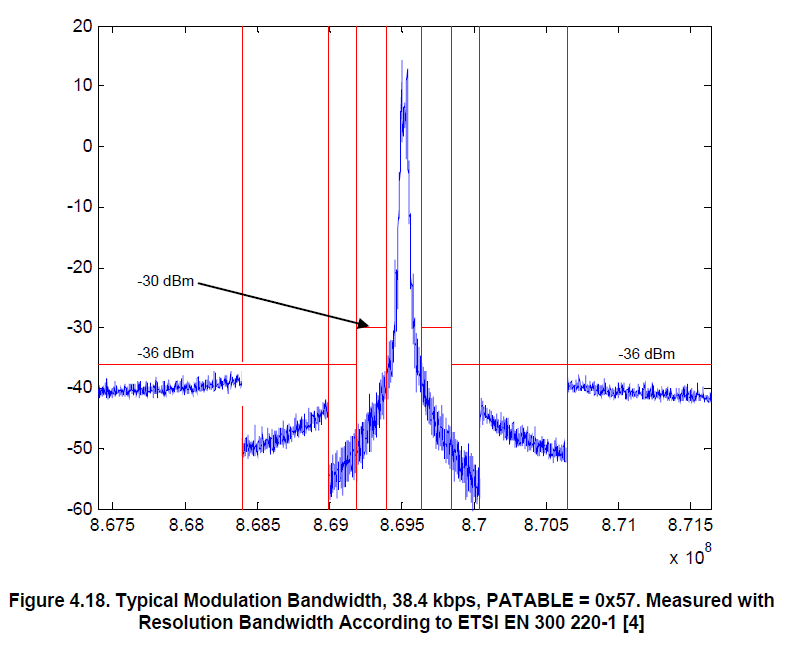Dear all,
I am struggling with the CC1101 PA TABLE configuration in order to lower some noise visible in this spectrum view.
As you can see, the modulation bandwidth seems to be mirrored at each ~300kHz. I had a look at the VCC rail, it is very clean (behind a LDO). I thought it was the ON/OFF transient of the cc1101/cc1190, I tried many different PATABLE configurations, and finally I kept on that one:
0x00 //-59.3 dBm on CC1101
0x03 //-30.2 dBm on CC1101
0x0F //-20.0 dBm on CC1101
0x1E //-15.1 dBm on CC1101
0x25 //-12.5 dBm on CC1101
0x36 //-8.1 dBm on CC1101
0x37 //-6.9 dBm on CC1101
0x37 //-6.9 dBm on CC1101
The PATABLE configuration itself does not seem to have any influence on the out-of-channel transient energy shown in this figure above.
Then, who knows where can this kind of intermodulation noise come from?
Thanks you.






